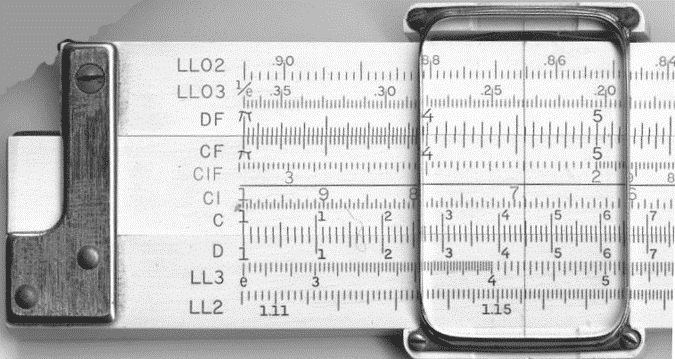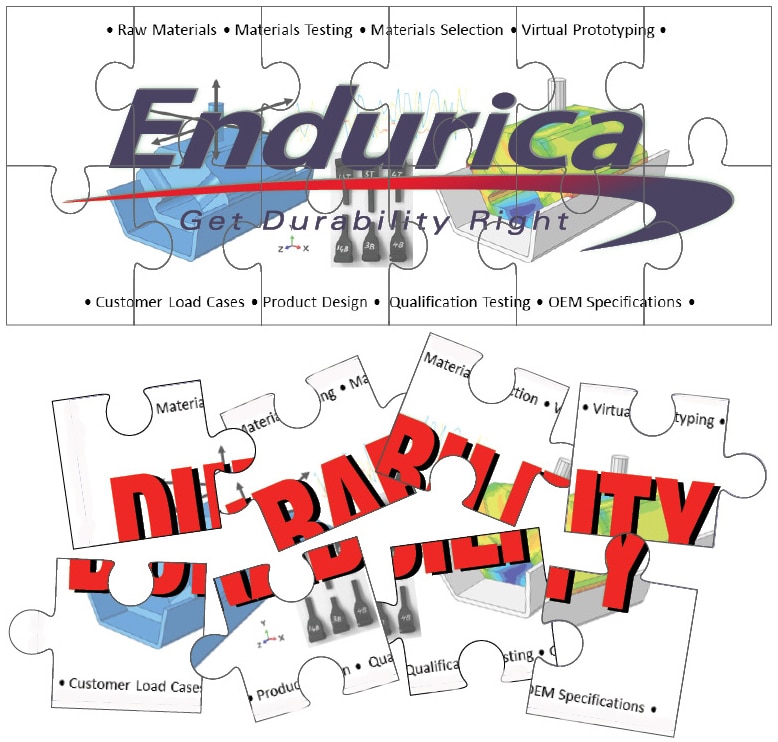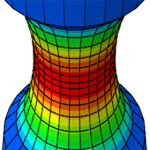It has been 20 years since Critical Plane Analysis for rubber was first conceived and validated. There were early signs of its significance. It won awards wherever I presented it. At the 1999 SAE Fatigue Design and Evaluation meeting, it won the Henry Fuchs award. At the 2000 Tire Society meeting, it won the Superior Paper award. At the Fall 2000 ACS Rubber Division meeting, it won the Best Paper award. Upon completing my 2001 doctoral thesis, we applied for and received a US patent (2003) on it.
The strongest early sign was that I soon found myself in company with others pursuing similar thinking. The earliest was Dr. Nicolas Saintier. As far as I know, neither of us was aware of the other’s work until 2006. That was when he published an account similar enough to my own that when it came across my desk and I first started to read it, I felt certain he would cite my 2001 work as a source. I have to admit to initially feeling let down when I reached the end of his paper and found no mention of my work. I immediately looked for his other papers and found his 2001 doctoral thesis titled “Fatigue multiaxiale dans un élastomère de type NR chargé: mécanismes d’endommagement et critère local d’amorçage de fissure.” (Multiaxial fatigue life of a natural rubber: crack initiation mechanisms and local fatigue life criterion). There it was – the same founding principle of Critical Plane Analysis that I had worked so hard to articulate and validate – the idea that cracks develop on a material plane, specifically the most critical material plane, and that their localized experience drives their evolution. That we both articulated this beautifully simple and powerful principle in the same year with complete independence from each other, when no one else working on elastomers had yet spoken of this approach (there were precedents in the field of metal fatigue analysis), just shows that it was an idea whose time had come.
Although the foundational principle of Critical Plane Analysis was the same, there were also important differences between our accounts. We differed on 1) how the critical plane is selected, 2) what criterion is used to quantify the severity of loading experience by the critical plane, 3) how damage on the critical plane evolves under solicitation. The following table summarizes the key differences:
Table 1. Comparison of the Mars and Saintier Frameworks for Critical Plane Analysis.
|
Mars 2001 |
Saintier 2001 |
| Critical Plane Selection Method |
Minimize the computed life after evaluation of damage on all planes |
Maximize the principal stress prior to evaluation of damage |
| Multiaxial Criterion |
Energy release rate estimated via cracking energy density on every plane |
Stress traction on the assumed critical plane |
| Damage Evolution Law |
Integration of crack growth rate law |
Power law Wohler curve |
| Strain Crystallization Law |
Treated as R ratio dependence of the crack growth rate law |
Treated as a modifier of the stress experienced on the critical plane |
It may be said that Saintier’s approach followed more closely the precedents for Critical Plane Analysis in metal fatigue, particularly with respect to the method used to select the critical plane. Selecting the plane is the first step in his method (identify the plane in order to compute the damage), but it is the last step in our method (compute the damage on each plane first and lastly pick the plane with the most damage). Saintier’s approach also depends on a Wohler curve style characterization of fatigue behavior, where ours is defined via a crack growth rate law. We have previously discussed the pros and cons of Wohler curves vs. fracture mechanics. In our approach, we placed a high priority on taking advantage of the very large pre-existing body of knowledge on the fracture mechanical behavior of elastomers, and on the economic and operational advantages that crack growth experiments enjoy.
Since my and Saintier’s first steps, there have now been many others who have contributed in various forms to the overall method, its validation and/or its application. It is safe to say that Critical Plane Analysis is here to stay, and set to continue expanding for many years (there are now several hundred research papers!).
For our part, Endurica is now in year 12 of delivering commercial grade fatigue analysis solutions built on this method. Today, Critical Plane Analysis is a production analysis workflow used by many engineering organizations to solve critical durability issues. It is the heart of the Endurica fatigue solver, and there are hundreds of trained users (look up the #fatigueninjas on twitter!). It is unrivaled for its reliability, speed and accuracy in computing the impacts of multiaxial loading on durability.
What do the next 20 years hold? We are going to see a transition in how fatigue analysis is used. OEM organizations that manage durability and risk across rubber component supply chains will transition away from receiving fatigue simulation results on an optional basis towards requiring fatigue simulations by default on every part at the inception of new programs. Expectations and achievement of cost-reduction, light weighting and sustainability initiatives will increase as product optimization begins to fully account for actual product use cases. Critical Plane Analysis has already laid the foundation for these things to happen. Older fatigue analysis methods that do not compete well against critical plane methods will become obsolete. On the research side, there will be further development of material models for use in the critical plane framework. Ageing, inelasticity, rate and anisotropy effects still need further development, for example. In 20 years, durability will be just one more thing that engineers do well every day, whether or not they know that Critical Plane Analysis was how they did it.
Mars, W. V, Multiaxial fatigue of rubber. Ph.D. Dissertation, University of Toledo, 2001.
Mars, W. V. “Multiaxial fatigue crack initiation in rubber.” Tire Science and Technology 29, no. 3: 171-185, 2001.
Mars, W. V. “Cracking energy density as a predictor of fatigue life under multiaxial conditions.” Rubber chemistry and technology 75, no. 1: 1-17, 2002.
Mars, W. V., “Method and article of manufacture for estimating material failure due to crack formation and growth.” U.S. Patent No. 6,634,236. 21 Oct. 2003.
Saintier, N, “Fatigue multiaxiale dans un élastomère de type NR chargé: mécanismes d’endommagement et critère local d’amorçage de fissure.” Ph. D Dissertation., Ecole des Mines de Paris, 2001.
Saintier, N, G. Cailletaud, R. Piques. “Crack initiation and propagation under multiaxial fatigue in a natural rubber.” International Journal of Fatigue 28, no. 1: 61-72, (2006).








 Ever thought about what it takes to deliver the durability you expect from products you use? Durability reflects the combined sum of many decisions made all along the supply chain. What sources to use for raw materials? What dimensions and shape for product features? Are there OEM- or customer-imposed design constraints? What load cases occur in manufacturing, shipping, installation, and operation? Manufacturing processes? OEM-specified qualification and / or regulatory testing requirements? What is the warranty or brand promise? If these decisions are not made well, then durability (as well as cost and weight) will suffer.
Ever thought about what it takes to deliver the durability you expect from products you use? Durability reflects the combined sum of many decisions made all along the supply chain. What sources to use for raw materials? What dimensions and shape for product features? Are there OEM- or customer-imposed design constraints? What load cases occur in manufacturing, shipping, installation, and operation? Manufacturing processes? OEM-specified qualification and / or regulatory testing requirements? What is the warranty or brand promise? If these decisions are not made well, then durability (as well as cost and weight) will suffer. Q: With regards to fatigue life prediction methods, where was the rubber industry 10 years ago?
Q: With regards to fatigue life prediction methods, where was the rubber industry 10 years ago?









